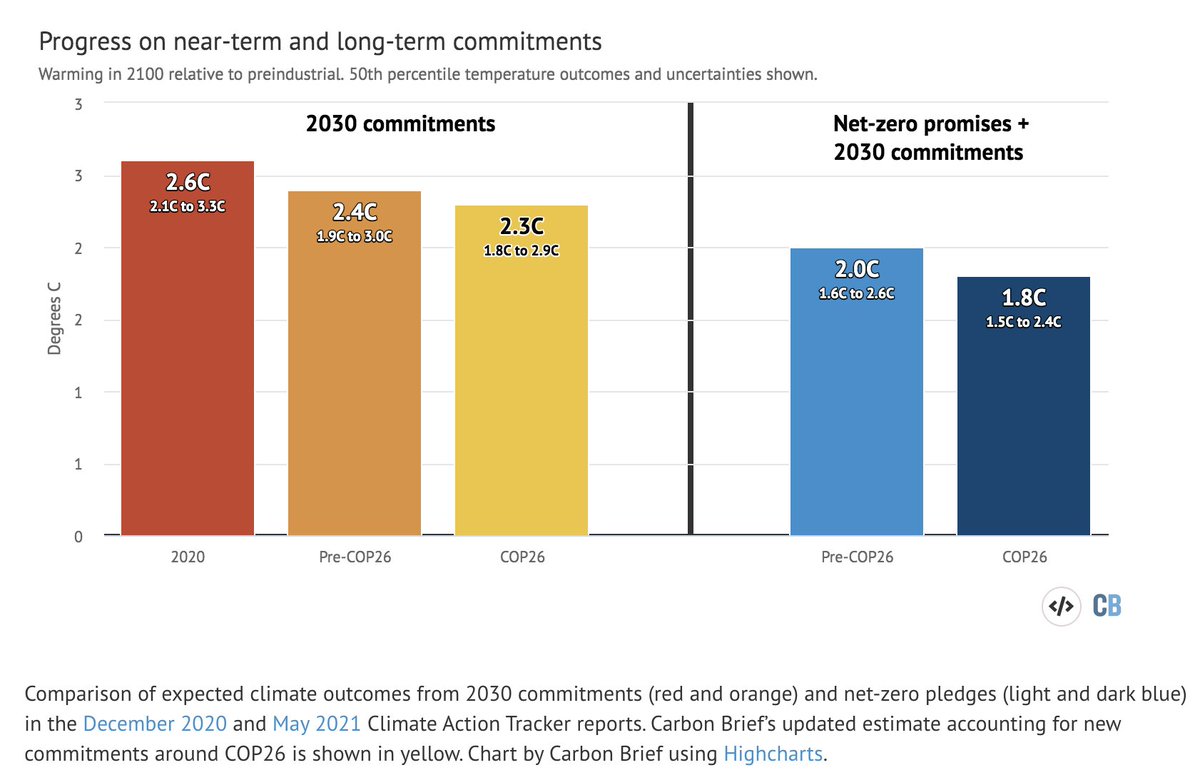
This sort of language is deeply problematic. A flatting of emissions does not result global warming stopping.
Rather, if emissions are flat global warming continues at its current rate, resulting in a significant rise in global temperature of around 3C by 2100 vs preindustrial.
Rather, if emissions are flat global warming continues at its current rate, resulting in a significant rise in global temperature of around 3C by 2100 vs preindustrial.
https://twitter.com/ShellenbergerMD/status/1466481861224452098
The only way to stop the world from warming is to get all emissions to (net) zero. The only way to meaningfully cool the planet back down during the next few centuries is to remove more carbon from the atmosphere than we add to it. 

So while its good news that high-end scenarios where global emissions double or triple are much less likely in a world of falling clean energy prices and a global coal industry in structural decline, emissions still need to fall dramatically to avoid significant future warming.
And, of course, climate system uncertainties are such that a current policy world of < 3C warming does not preclude outcomes of 4C if we end up with high sensitivity or carbon cycle feedbacks. Greater emissions reductions are needed to preclude these risks thebreakthrough.org/issues/energy/… 

• • •
Missing some Tweet in this thread? You can try to
force a refresh











